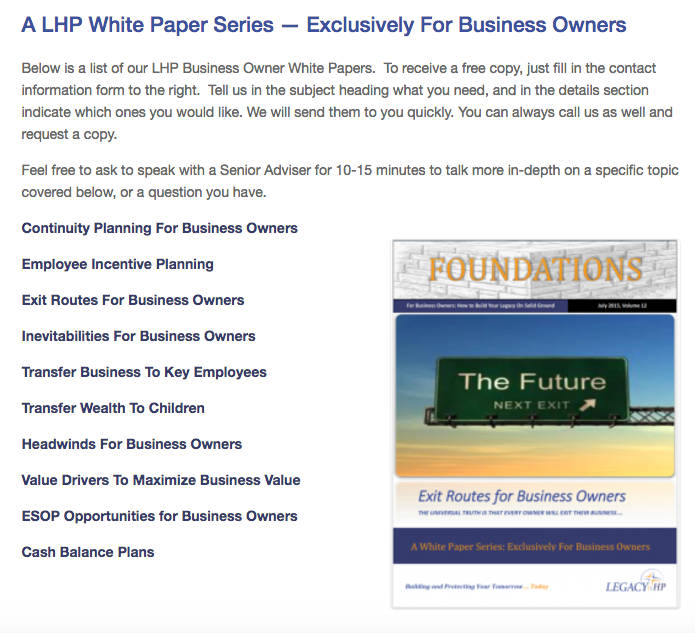Most parents have a natural inclination to distribute every asset equally to all children. The thought of giving one asset, and very likely the most valuable asset, to one child is considered unequal and, therefore, unfair to the other children.
Yet, upon closer examination, leaving the business entirely to the business-active child (BAC) and making an equitable distribution of the balance of family assets to the inactive children (and perhaps to the BAC as well) is the fairest plan of all.
"Fairness" in this context is usually a judgment parents make about what they think is fair to the children. What it overlooks is what the children deem to be fair to each of them. This perspective is all too often missing in family transition planning. To determine what is fair, assume the point of view of the business-active child and then that of the inactive child.
Let’s look at why the business-active child might well resent having a co-owner sibling who is inactive in the business. Perhaps one of these reasons applies:
- It is the efforts of the business-active child to increase the value of the business that should be rewarded. You probably offered all of your children an equal opportunity to participate in the business and become owners. Yet, only one child seized that opportunity. Why force your most ambitious, risk-oriented child — the one who chose to succeed you — to share the rewards with children who chose different career paths?
- You had no co-owners in the business because you wanted to operate the business independently. As an entrepreneurial "chip off the old block," your child doesn’t want to share ownership any more than you did.
- The controlling vote is not enough! When there are co-owners, the child running the business has a fiduciary duty of due care and loyalty to all other shareholders. That means that the business-active child’s actions, such as giving herself a bonus, or increasing her own salary, or indulging in other business "perks" (as you do), must all be reasonable and comparable to what a non-shareholder performing the same duties for the company might reasonably expect. I doubt you would subject your compensation and perks to the same level of scrutiny.
And what about the inactive child’s perspective? Inactive children are unlikely to want ownership in the business, if other choices are available.
- Inactive children generally prefer to own, or receive, assets that are more liquid and less risk-oriented than ownership in the business. This is usually true even if they have to wait until both parents die to receive their inheritance.
- If the inactive child owns part of the business, have they received anything of real value? Partial business ownership will make the inactive child the proud owner of an illiquid security that generates no immediate income or other benefits. Further, the inactive child has no ability to sell his interest, except to the business-active child. Yet, that’s hardly a problem since the active child won’t, in all likelihood, have the money to purchase it. And, if he does, the business-active child’s idea of fair market value is likely to differ dramatically from that of the inactive child. Congratulations! You’ve created your own Cain and Abel!
- It would seem from the above point that the inactive child’s ownership interest would have little value. The (now friendlier) IRS begs to disagree. While a non-controlling ownership interest can certainly be discounted in value, it will nevertheless rise in value as the overall business value increases (due to the efforts of the business active child). Because it is difficult for the inactive child to get rid of the ownership, he or she has to deal with the tax consequences.
- And one last thing. Keep in mind that the inactive child will not be able to make any decisions regarding the future course of the business.
If only one child should own the business, how do you find the second ingredient — fairness to all children — when transferring the business to the business-active child and other assets to the inactive children? Obstacles to a fairtransfer of assets include:
- The business value may be significantly greater than the combined value of the remaining family assets.
- If part of the business value is attributable to the business-active child’s efforts, is it not fair to consider that part of the business to be that child’s interest now? How do you determine the active child’s contribution to existing business value?
- And let’s not forget the timing issue. It makes good business as well as income and estate tax sense to transfer a significant amount of the business during your lifetime to the business-active child. The inactive children, however, will not likely receive their "share" of the family wealth until after you and your spouse die. The reason for this is simple: the non-business assets are usually retained by you to provide income and financial security to you and, after your demise, to your spouse. The resulting timing difference is mitigated by the liquidity difference in the assets the children receive. The business-active child may receive assets now but his assets are highly illiquid and subject to business risk. The inactive children may have to wait but the assets they receive will be highly liquid and relatively risk-free.
- In addition to the present difficulty of distributing business and non-business assets equally, there is an added complexity of measuring the current value of the business interest given to the business-active child against the future value of the bequest given to the inactive child. To understand the present vs. future value conundrum consider the following:
- Is the business-active child, in effect, paying for the business now through "sweaty-equity" (lowered compensation, more working hours, and greater risk)? If so, the current gift is not really a gift, but recognition of that child’s efforts.
- Is the business-active child adding to the business’s value through his or her efforts? If so, he should not have to pay for that effort by receiving a reduced share of the ultimate estate.
- Has the active child (by continuing in the business after your retirement) become a critical element in your retirement plan by ensuring that the business can pay you any deferred compensation and purchase your stock? If so, the means by which you tie her to the business — the golden handcuffs — may be the transfer of stock. Again, acquiring stock because it benefits you should not penalize the business-active child when it comes to sharing in the estate.
- Is the business active child paying for part or all of the business?
How can one possibly find the correct measure of this ingredient?
For most families, the decision ultimately comes down to a discussion of fairness vs. equality. Because the difference in contribution to the business and differences between assets being gifted (business vs. non-business and consequent timing difference) it is imperative to be equitable or fair in treatment, not necessarily equal. Parents must strive to be fair. They must communicate and explain this strategy to all of the children. Often it is best to hold a family meeting using advisors to facilitate the discussion.
Finally, be certain to make appropriate adjustments in your will, trusts and buy-sell agreements to apportion assets if your lifetime transfers of the business and other assets are not completed before your demise. As part of those documents, the business active child should have the right to have her share of your estate consist of business interests while the remaining children have the right to have their portion of the estate satisfied with other interests.
Take care and have a good day,
Michael
ABOUT LEGACYHP: Our passion is our mission -- To position our clients into a positive, energized, posture -- within your businesses and within your lives -- So that you manage change confidently, take decisive action, and enjoy life's journey Today... while you enjoy building your Legacy for Tomorrow.
Notice: The information contained in this article is general in nature and is not legal, tax or financial advice. For information regarding your particular situation, contact an attorney or a tax or financial advisor. The information in this newsletter is provided with the understanding that it does not render legal, accounting, tax or financial advice. In specific cases, clients should consult their legal, accounting, tax or financial advisor. This article is not intended to give advice or to represent our firm as being qualified to give advice in all areas of professional services. Exit Planning is a discipline that typically requires the collaboration of multiple professional advisors. To the extent that our firm does not have the expertise required on a particular matter, we will always work closely with you to help you gain access to the resources and professional advice that you need.



